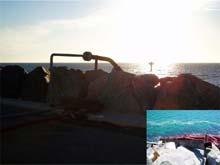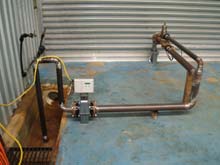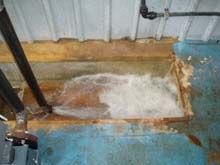
At this time the Cylindrical Energy Transfer Oscillating (CETO) unit was pumping sea water to shore and the unit underwent intensive tests and analysis.
The desktop simulations, engineering and calculations were verified early in July of this year when, for the first time CETO successfully pumped water onshore. The concept of capturing energy from waves was thus proven. “Fine tuning” then began. The last quarter of 2005 was dedicated to more detailed engineering with actual values. Inside the test facility (onshore), where the water pipe terminated, additional electronic equipment was installed for measuring and logging data. The main parameters recorded onshore were the flow rate and the pressure. Sensors were placed in strategic positions around the unit. These sensors provided significant wave height, wave period, and energy spectrum etc data for the specific sea-state by using Citect SCADA software and programmable logic controllers.
The data loggers inside the test facility (onshore) allowed remote monitoring of data over a virtual private network (VPN) and could be viewed from the UK. The input parameters were from the flow meter and pressure gauge. These analogue signals were converted by the device’s analogue to digital converter. The values were recorded historically and analysed on a computer.
The importance of measuring the parameters onshore cannot be overstated. IT takes CETO pump sea water into account, energy losses due to the length of the pipe, friction losses from the CETO pump and is the last exit point before turbine connection. A flow control valve will also be installed to enable the SCADA Citect to automatically optimise the flow rate.
At this stage, CETO still required more testing to optimise the stroke of the arm connecting the diaphragm to the pump.




